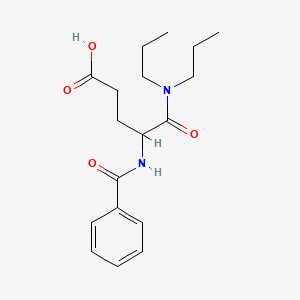|
Name: Phenomorphan
Type: Opioid
AKA: N/A

|
|
II. Natural Derivative
Synthetic substance, no natural derivative
 |
|
III. Chemical Profile (IUPAC name)

|
|
IV. History
Phenomorphan, a synthetic opioid, was first developed in the early 20th century. It was designed for its analgesic properties and used in pain management. The compound's introduction reflects early research into synthetic opioids. Phenomorphan's use has been limited due to safety concerns and regulatory controls.

|
|
V. Legal Information
Phenomorphan, an opioid analgesic, is classified as a Schedule I controlled substance in the US, making it illegal. Many countries have similarly banned it due to its high potential for abuse and lack of accepted medical use. The UNODC monitors synthetic opioids, emphasizing the need for strict controls to prevent misuse and address the opioid crisis.
US Federal Schedule - I
Schedule I drugs, substances, or chemicals are defined as drugs with no currently accepted medical use and a high potential for abuse. Some examples of Schedule I drugs are: heroin, lysergic acid diethylamide (LSD), marijuana (cannabis), 3,4-methylenedioxymethamphetamine (ecstasy), methaqualone, and peyote.
Key US Federal Policies:
Controlled Substances Act. Public Law: Public Law 91-513 (text can be found on GovInfo) (https://www.dea.gov/drug-information/csa). Date enacted: October 27, 1970.
|
|
VI. Physical Effects
Phenomorphan is an opioid with depressant effects, leading to sedation, pain relief, and reduced heart rate. It causes constricted pupils and respiratory depression. Short-term effects include pain relief and euphoria, while long-term use can result in addiction, tolerance, and respiratory complications. Overdose risks involve fatal respiratory depression. Safe use requires careful medical dosing. Recent research emphasizes its efficacy in pain management and potential for misuse.  |
|
VII. Psychological Effects
Phenomorphan is a potent opioid analgesic producing euphoria, sedation, and pain relief. Immediate effects include mood elevation and cognitive impairment. Long-term use can lead to addiction, tolerance, and severe withdrawal symptoms. Chronic use is associated with depression, anxiety, and cognitive decline. Recent studies highlight the high abuse potential and mental health risks of opioids.
 |
|
VIII. Culture
Phenomorphan is a potent opioid analgesic with a history of use in pain management. Opioids have been central to pain management, with a storied history from ancient opium use to modern pharmaceuticals. Phenomorphan's cultural significance is tied to the broader narrative of opioid use, including issues of pain treatment, addiction, and regulatory control. Although not as widely discussed as other opioids, it represents the complexities of opioid medications in healthcare. Debates about its use often intersect with larger discussions about the opioid crisis and the need for balanced pain management strategies.
 |
